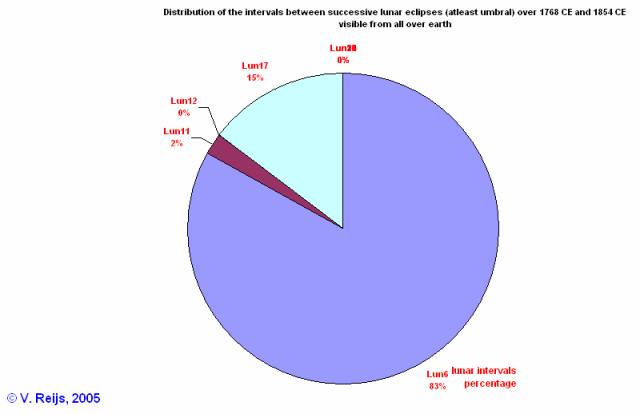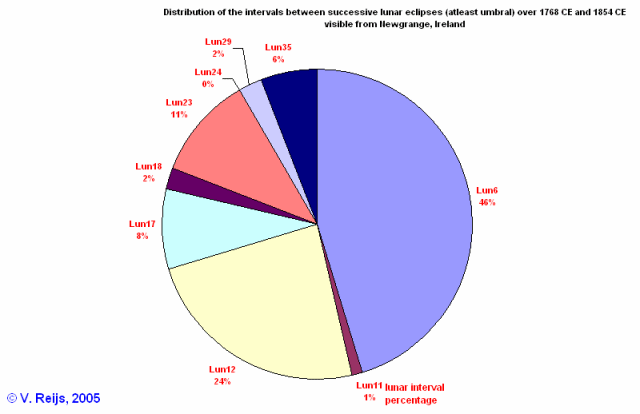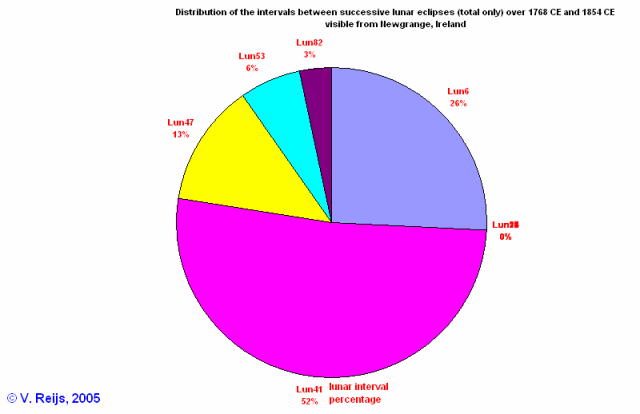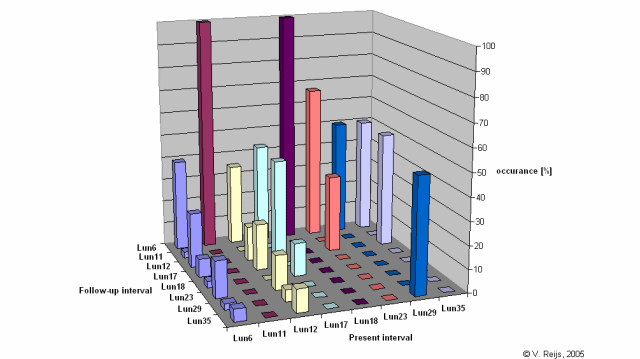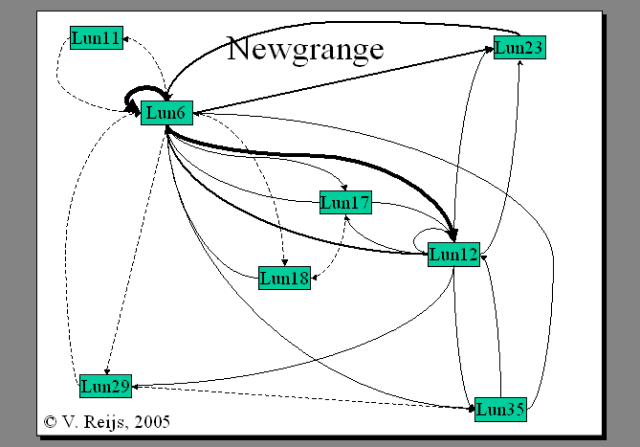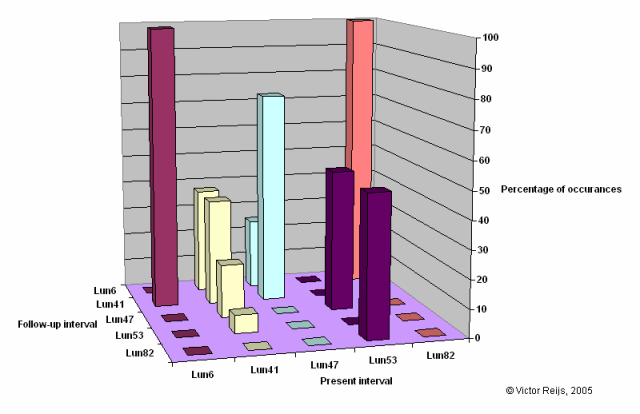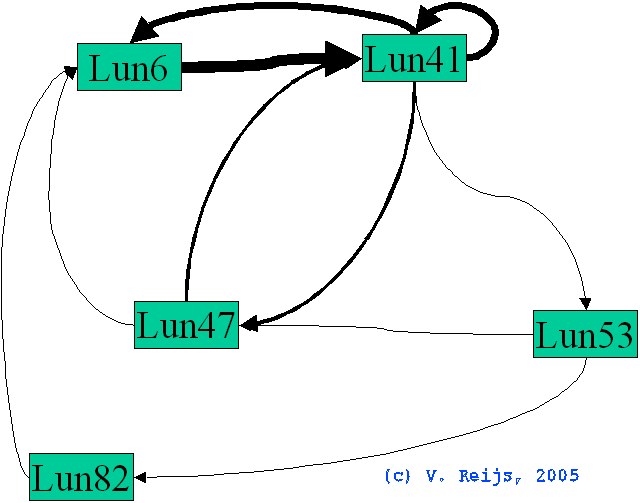Asking Meeus about the above
lunation periods, he discusses (Chapter 27, [
2007]) his findings on umbral lunar
eclipses in the period 1000 BCE to 4000 CE. He has comparable
findings as done above, interestingly though is that before 900
CE Lun5 could happen due to different eccentricity of the
Earth's orbit (after that date it will not happen anymore in the
near future [6000 CE]).
